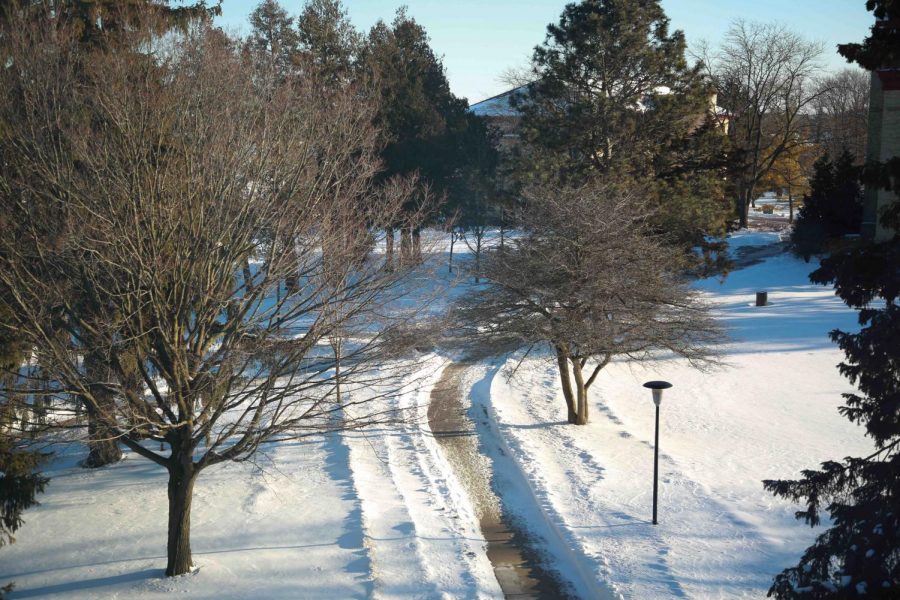Ashes, They All Fall Down
February 18, 2020
“There’s an old Chinese proverb that says, ‘When’s the best time to plant a tree? Last year,’” said Associate Professor of Biology, Paul Pickhardt. Lakeland has had to make the difficult decision to remove many of the trees on campus due to the spread of the Emerald Ash Borer.
The Emerald Ash Borer, otherwise known as EAB, is an invasive species of beetle from Asia that is affecting all the ash tree species not only throughout Wisconsin, but all across North America.
This beetle, Pickhardt explained, “lays its eggs on ash trees…the larvae feed on the inside of the tree underneath the bark. And they make these galleries that cut off the food flow between the plant leaves and the roots…eventually it kills the tree. It’s fatal.”
There are thousands of ash trees on the Lakeland property, ninety or so of which are on the main part of the campus we walk through every day. The only way to prevent an ash tree from being removed after being infested with EAB is by using a chemical treatment specifically for these ash trees.
The chemical is, “an annual treatment costing approximately $100 per tree,” said Director of Facilities, Joe Beniger. While it would usually cost more than $100 to take care of the entire treatment process, Beniger explained since the grounds crew “do it in house with current staff whom are already budgeted for this”, it only leaves them to budget the additional costs of the chemicals needed for the treatment.
This may still sound expensive; however, it is very cheap when compared to the cost of removing the dying trees, also known as standing dead trees, which can range in the thousands depending on the size.
But this does not change that many of the ash trees on campus are still going to be removed. Among the ninety or so ash trees on campus, only about twenty of them have been chosen to remain and receive the chemical treatment in hopes of being saved as it is not always a guarantee that the treatment will work.
As for the remaining ash trees in the woods, Pickhardt explained that dead standing trees make wonderful habitats for birds and other animals.
“I’m hopeful that Lakeland can just let those standing ash trees die…they’ll eventually be replaced by the trees that aren’t affected by the disease,” stated Pickhardt.
Many people, not just students, will dearly miss the ash trees that have been here for so many years. However, it does not mean that Lakeland is going to let those soon to be vacant spaces remain so forever.
“It’s sad to see the ash trees go…” Beniger lamented, “Our plan is to do our best to budget…for replacement trees and continue to monitor the existing ash we are trying to save.”


